

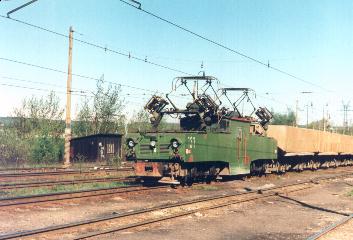 |
Locomotive No. 131 (17E3, manufactured No. 4443) with the set
|
This firm for the transport of all of exhausted materials (brown coal, overburden) uses railway with 900 mm gauge. If we take a train on the Czech Railway's line No. 140 in the direction Cheb, this railway net is situated on the right side roughly from stop Královské Poříčí to stop Hlavno. In the centre of this narrow gauge railway complex is Svatava. The net is composed of stabil main lines (about 250 km), which are usually double- or multi-track, and movable lines (about 200 km). The routes of movable lines are changed according mining advance. All of track (excepting some of servis tracks) are electrified with the direct-current system 1500 V.
Traffic is controlled from 25 operating control points. This points are equipped with interlocking system WSSB Berlin (3 points), AŽD Praha (16 points) and 6 points are equipped with self-made interlocking. Tracks between control points are equipped with automatic block, there is also two-way working triple-track line!
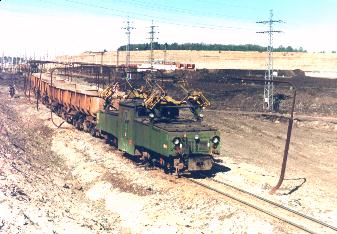 |
Locomotive No. 192 (17E6, manufactured No. 0307)
|
Traffic is controlled according to instructions D-D1 "Signal instructions for mine railways" and D-D2 "Operating control instructions for mine railways". This instructions are compared to similar instructions of Czech Railways slightly diverse. The basic diversity is, that currently pushed trains run here (maximum speed of all trains here is 30 km/h). Therefore some of semaphores are accepted for the beginning of train, the others for the beginning of engine. There are utilized, that there are running sets of wagons with the same length. The set constituted of engine and fixed number of wagons is constant. It is changed only at the time, when some of wagons or engine is going to repair. Owing to this specialities the lengthy shunting with engine from one to another end of the set of wagons doesn't be maked.
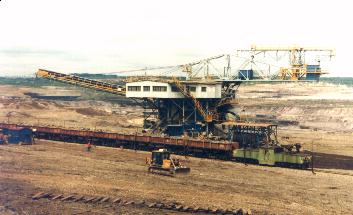 |
Locomotive No. 133 below overburden dumping machine
|
Amount of traffic there is uniquely high. In some of operating control points is daily run higher then in Czech Railways' stations with the highest volume of traffic. In addition the daily run is distributed almost uniformly in the course of whole day. But there is almost shunting not existed (possibly excepting maintenance departements).
The base of engine stock consist of electric locomotives type Škoda 17E, which are manufactured in Škoda Plzeň and SMZ Dubnica nad Váhom. This engines was manufactured in years 1958-1967. This locomotives are used for overburden trains (consisted of 8 wagons type LH) and coal trains (consisted of 6 wagons type LOWA). In load direction average mass of this trains is 400 - 500 tons.
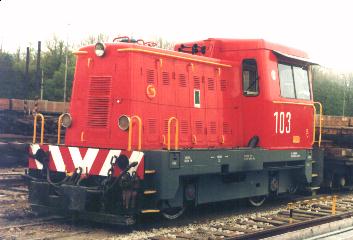 |
Diesel locomotive No. 103 in Svatava |
For work trains traction are used locomotives Series T29.O manufactured in ČKD Sokolovo Prague or TS Martin in years 1960-1971. Trains are manipulated only by engine driver, on engine operation position can be fixed number of rightful persons (in engine type 17E can be 5 persons inclusive engine driver).
Regarding all the time keep changing location of mining, the railway lines' layout is considerably changed. Extent of the railway net is all the time keep down - it is consequence of mining decay. In the past there was several discharging places, now coal trains run only to one place (Central coal separating plant Tisová - north bunker). Trains to this coal separating plant take a route directly through Citice village. The amount of coal transport is lowly than the amount of overburden transport. Waste rock is transported to waste dump, where the terrain is prepared for recultivation. In the future mining decay is going to continue. Mining on locality Medard and Libík (south-west from Svatava) can be ended at the beginning of next century.
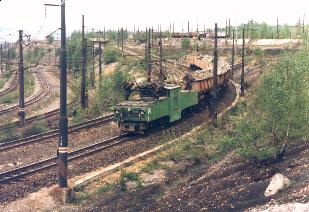 |
Locomotive No. 342 (17E8, manufactured No. 0370)
|